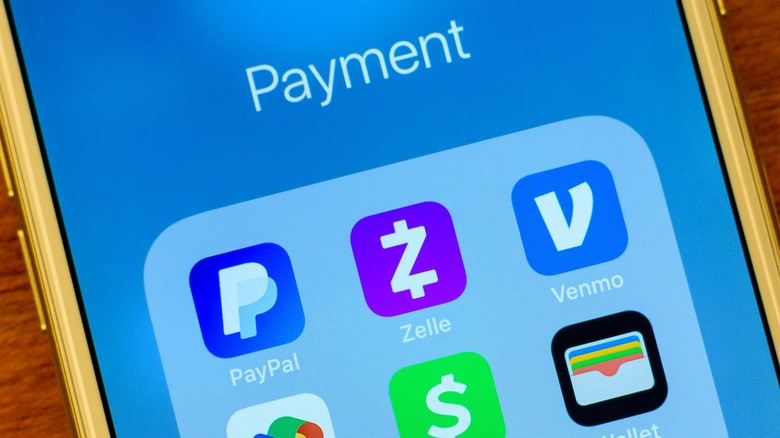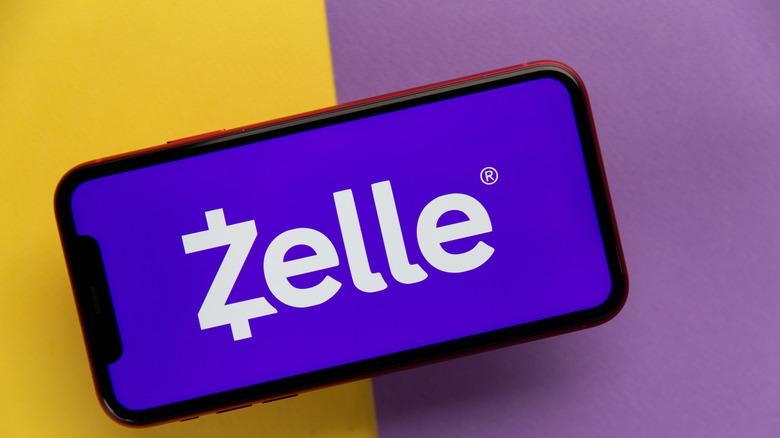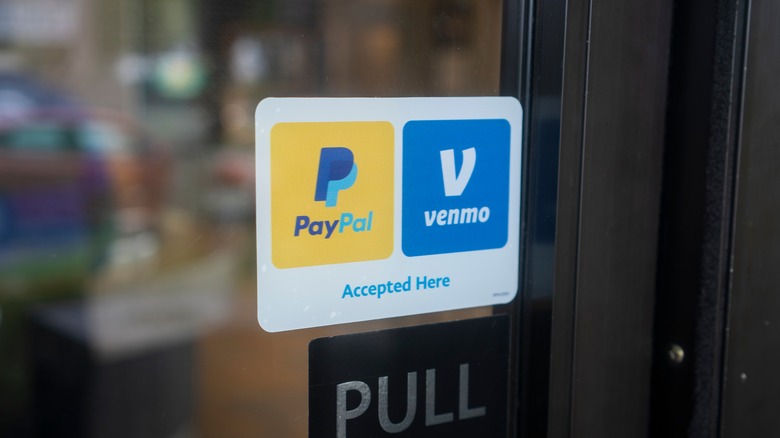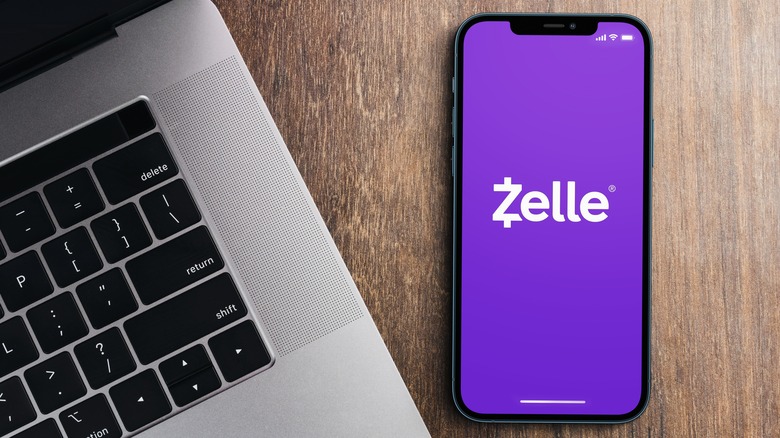Zelle Vs Venmo: Which Is The Better Payment App?
Of the many questions raised by the interface between money and the internet, maybe the simplest is "how do I quickly, safely shoot day-to-day spending money from here to there?" The ubiquity of online payment has made money more mobile but also necessarily more complicated. Purely online financial instruments have created new places to gain, lose, and exchange money beyond bank accounts, pants pockets, and couch cushions. Going digital has also created security concerns beyond physically losing cash money.
Many providers offer solutions to the new complexity of moving money around. Two of the most popular platforms for quick, convenient transfers of sensible sums are Zelle and Venmo. Zelle is a service that generally comes coupled with a bank's mobile app. Venmo is a standalone provider that maintains balances and makes transfers independent of users' bank accounts. Both approaches have advantages and drawbacks, and which one will meet your needs comes down to what you want to do with your money.
What is Zelle?
The money-transferring platform Zelle — which rhymes with "sell" rather than "jelly," according to the company — is fundamentally a new offer from your bank that happens to be administered by a third party. Zelle partners with your banking provider to give you fast, straightforward access to your funds and a means of making quick transfers through a secure service.
The benefits of Zelle are largely the benefits of online banking in general. Zelle is a product of Early Warning Services LLC, a company jointly owned by seven of the largest U.S. banks, according to the CFPB: Bank of America, Capital One, JP Morgan Chase, PNC, Truist, US Bank, and Wells Fargo. Because it is fundamentally a banking service, Zelle puts a premium on security and ease of use. Every form of security available at your bank, including FDIC insurance if anything goes wrong with your account, also applies to Zelle. Even better, all of Zelle's services are free to use, according to the company's website.
What is Venmo?
Unlike Zelle, which depends on banking infrastructure, Venmo is a standalone app that requires no third-party support; users only need the Venmo app in order to send and receive money. On its website, the company refers to itself as a digital wallet, and instead of working through banks, Venmo is a subsidiary of PayPal, giving it the same degree of flexibility and platform compatibility as the online payment service. Venmo is available as a free download for iPhone and Android devices.
Venmo offers a variety of features beyond basic cash transfers, including its own-branded credit and debit cards. The app also incorporates social elements — ones that have proven controversial at times — that allow users to connect with their friend networks and see and react to their friends' activities. Venmo also allows users to build secure friend lists and monitor their funds without requiring a connected bank account.
Fees and transfer speed
Speed and convenience are the primary offers of both Venmo and Zelle. Both exist to make it easier to transfer money, such as sending a friend some money to reimburse them for drinks or gas. However, there are some big differences between them, and one option may be better for some users than the other.
Zelle is fundamentally a user-friendly system for transfers between bank accounts; it is integrated with a number of banks and credit unions, according to the company's website, and it also works with a companion mobile app. Users who are sent money but don't have a bank account integrated with Zelle can instead link their debit card to the app alongside their phone number to receive the funds. Most transfers happen "in minutes," according to the company, though users must have a checking or savings account to use the platform. As well, Zelle doesn't charge fees to send and receive money.
Because it is a standalone service rather than a bank-based application, Venmo does things differently. Transfers are free between Venmo users if the money is sent from a bank account or debit card, but transferring money from a credit card will cost 3% of the total. According to the Venmo Help Center, transfers take one to three days to reach the recipient unless the sender pays a 1.75% fee for an instant transfer.
Security
Where security is concerned, Zelle benefits from its banking partnerships — and, of note, those banks are FDIC-insured, which provides a level of protection for users' money. As well, according to the company's website, Zelle doesn't share any personal details with the recipient aside from the email or phone number associated with the account. As tends to be the case with financial platforms, however, scammers have used Zelle to target victims; the company has a number of pages dedicated to this issue on its website, and the company makes it clear it doesn't offer protection from fraud.
Scams aren't unknown on Venmo either, and Venmo balances aren't insured by the FDIC or any banking organization. Instead, Venmo offers independent security solutions through its parent company PayPal. Bug bounty programs help keep the system safe. Reporting fraud and closing compromised accounts is as easy as clicking an in-app menu. However, no third party insures Venmo balances or transfers. As well, Venmo has faced privacy scandals related to the social aspect of its platform, something that came to a head in early 2021 when Biden's Venmo account revealed his friends list. The company took steps to reduce the privacy troubles a few months later, but some critics say the change wasn't enough.
Platform support
Both Zelle and Venmo have upsides and downsides, and which is better for you will depend on your needs. If you don't have a checking or savings account, for example, you'll need to open one to use Zelle — and if you don't want to do that, of course, then Venmo is your only option out of the two. On the other hand, Zelle is more appealing for users who have access to it through their bank, as the transfers only take a few minutes and are free. Venmo, in comparison, charges a fee for instant transfers. At their core, both Zelle and Venmo support iOS and Android, but Zelle users can also send money from a computer by logging in to their bank's website.
Zelle doesn't offer credit or debit cards, unlike Venmo, since its users are by definition eligible for cards through their banks. The service also does not maintain a cash balance separate from users' bank accounts. As well, Zelle may simply lack the name recognition of Venmo, meaning it may be more of a hassle for your friends to accept the money you send them using the platform, assuming they're already signed up with Venmo.
Venmo users can maintain cash balances on the app itself, with no bank required. All Venmo's card offerings operate on the Mastercard network, making them widely acceptable to vendors on- and offline. Venmo has even begun exploring the possibilities of cryptocurrency, giving its cardholders the opportunity to receive cashback awards in the form of crypto. However, the social aspect of Venmo remains controversial, and that may be a good reason for some users to pick Zelle as their primary platform instead.





